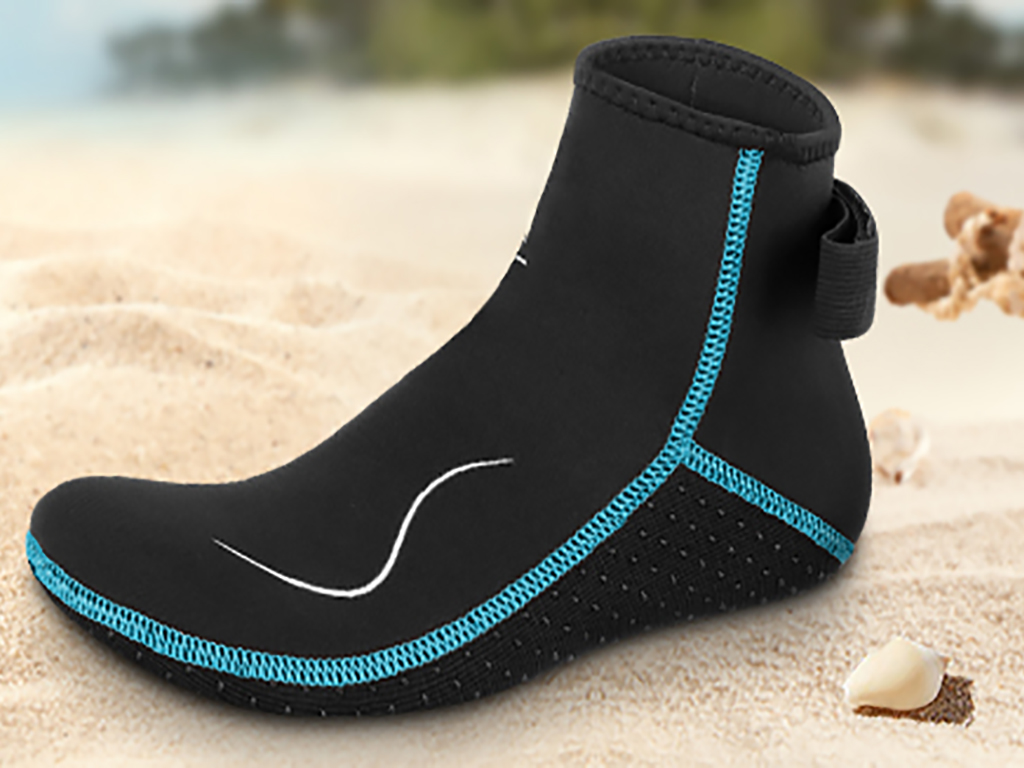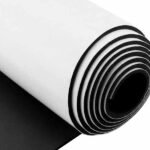Neoprene socks are a favorite choice for many people who engage in water sports, outdoor adventures, or work in damp environments. But a key question that arises is: are neoprene socks truly waterproof? In this article, we’ll explore the waterproof properties of neoprene socks, how they work, and why they are so highly valued for their insulation and protection. By the end, you’ll have a clear understanding of what makes neoprene socks effective in keeping your feet dry, and whether they are the right choice for your activities.
Neoprene socks are water-resistant, and for most activities, they are considered waterproof. However, their effectiveness depends on certain factors such as thickness, fit, and the environment in which they are used. Neoprene material itself is designed to provide thermal insulation and water resistance, but no material is completely impervious to water in every scenario.
Waterproof clothing and accessories are crucial for anyone involved in water-related activities or exposed to wet environments. Neoprene socks offer a blend of insulation, durability, and water resistance, making them an excellent choice for keeping your feet warm and dry. But what exactly makes them effective? Let’s dive deeper into the details.
What Are Neoprene Socks?
Neoprene socks are specialized footwear designed to provide insulation, comfort, and water resistance for various outdoor activities. Made from neoprene rubber, the same material used in wetsuits, these socks are particularly favored in water sports such as surfing, diving, kayaking, and fishing. Neoprene has excellent thermal insulation properties and is naturally flexible, making it an ideal material for socks worn in wet and cold environments.
Neoprene socks are crafted from a synthetic rubber material known for its flexibility, insulation properties, and water resistance. They are commonly used in water sports or any activity where keeping your feet warm and dry is a priority.
The structure of neoprene provides both cushioning and a snug fit. This makes neoprene socks more than just protective footwear — they’re designed to keep you comfortable in various water-related activities. The key to their effectiveness lies in the way neoprene is designed to trap air bubbles in its structure, providing insulation and reducing the loss of body heat.
How Do Neoprene Socks Work?
Neoprene socks work by creating a barrier between your feet and the cold or wet environment. When worn, they trap a thin layer of water between the sock and your skin. As your body heats up, this water layer warms up, providing thermal insulation and preventing the loss of body heat. This unique design keeps your feet warm even in cold water.
The insulating properties of neoprene socks are achieved by trapping a thin layer of water between your foot and the material. This trapped water warms up with your body temperature, providing heat retention and maintaining comfort in cold environments.
The water resistance of neoprene comes from the material’s closed-cell structure. The small air bubbles trapped within neoprene prevent water from fully penetrating the fabric. However, neoprene socks are not completely waterproof because, over time or under extreme pressure, water can seep in. The overall effectiveness depends on the fit and the specific activity you’re engaging in.
Are Neoprene Socks Waterproof?
While neoprene socks are designed to be water-resistant, they are not entirely waterproof in every situation. Their main function is to prevent water from directly reaching your skin and to provide insulation in cold and wet conditions. They will keep your feet dry during most activities, especially in controlled environments like surfing or diving, where the socks fit snugly around the ankle.
Neoprene socks are water-resistant but not completely waterproof. They are designed to keep water out for most activities, but in situations where they’re submerged or exposed to continuous water pressure, some water may eventually seep through.
If the socks are not well-fitted, or if they experience prolonged exposure to water, some water might enter. For example, while they will keep your feet dry in shallow waters or light rain, they may not provide complete protection in extreme conditions such as submersion under water for extended periods. That being said, neoprene socks still perform exceptionally well in most water sports and outdoor activities, offering a high level of water resistance.
How Are Neoprene Socks Different from Other Waterproof Socks?
Compared to other waterproof socks, neoprene socks excel in providing insulation. While many waterproof socks are designed with layers of waterproof fabrics like Gore-Tex or rubber, neoprene socks combine water resistance with thermal insulation, making them more suitable for cold environments.
Neoprene socks offer a unique combination of water resistance and thermal insulation, unlike other waterproof socks that may focus solely on keeping water out. This makes neoprene socks ideal for colder conditions.
Other waterproof socks may be more breathable or lightweight, but they lack the insulation that neoprene provides. For activities in colder water, neoprene socks offer superior warmth and protection. However, for hot or humid environments, neoprene socks can be less breathable than specialized waterproof socks made from fabrics like Gore-Tex.
Which Activities Are Neoprene Socks Best for?
Neoprene socks are perfect for a variety of water-related activities, such as surfing, diving, kayaking, and fishing. They are also ideal for cold-weather hiking, hunting, and working in wet conditions. The combination of water resistance and insulation makes them highly versatile for any activity that involves wet or damp environments.
Neoprene socks are best for water sports like surfing, diving, and fishing, as well as cold-weather outdoor activities. Their insulation and water resistance make them ideal for these environments.
The material provides excellent protection against cold water, making them essential for people who spend extended periods in water, whether for recreational activities or professional purposes. Neoprene socks are also popular in industries like fishing, where workers need to stay comfortable in wet and cold conditions for long hours.
Are Neoprene Socks Breathable?
Neoprene socks are not highly breathable compared to other materials like cotton or wool. The closed-cell structure of neoprene that provides insulation and water resistance can also limit airflow, which may cause some moisture buildup inside the sock.
Neoprene socks are less breathable than some other materials, which can cause moisture buildup. However, their insulation properties outweigh the lack of breathability in most water-related activities.
While neoprene socks aren’t the best choice for hot and humid environments, they are perfect for cold and wet conditions, where breathability is less of a concern. If you’re planning to use them in warmer environments, look for lighter-weight neoprene or socks with enhanced ventilation.
Conclusion
Neoprene socks offer excellent water resistance and thermal insulation, making them ideal for a wide range of activities in wet or cold conditions. While they are not entirely waterproof, they provide significant protection against water and are perfect for water sports, fishing, and other outdoor activities. When choosing neoprene socks, consider the fit, thickness, and intended use to ensure optimal performance.
If you are looking for high-quality, customizable neoprene socks for your brand or business, we at Szoneier offer durable, water-resistant socks in a variety of sizes, colors, and designs. Contact us today to learn more about how we can provide tailored solutions to fit your needs.











